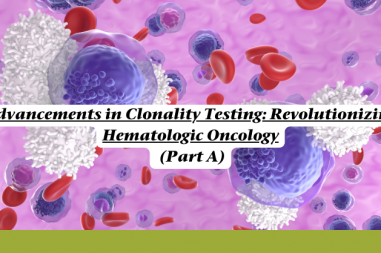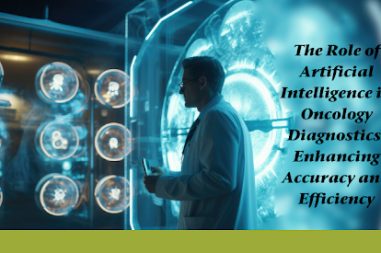The First Human Genome Project took around a decade to sequence the entire human genome which cost around $3 billion. It would take around a century if a single human genome is to be sequenced on only 1 Sanger sequencer. However today it is possible to sequence the entire human genome within a week through next-generation sequencing (NGS) at a much lower cost. In the era of genomics, NGS is a one-stop hub providing solutions to many clinical applications such as identifying mutations in cancer biology, heritable disorders, genetic engineering, metagenomics, transcriptomics and epigenetics etc

Why is it important to know the DNA sequence-?
Sequencing DNA of an organism is determining the order in which the building blocks (nucleotides): adenine (A), Guanine (G), Cytosine (C) and Thymine (T) in DNA are placed. Alphabets are arranged to make a word that has a certain meaning. Similarly, the order of nucleotides DNA carries information and determines the function of genes which codes for proteins and non-coding RNA in the cell maintaining all the activities of an organism for development.
Sanger sequencing was more commonly called first-generation sequencing developed by Fredrick Sanger in 1977 in which chain termination was used to generate oligonucleotides of different lengths which are fluorescently labelled. Sanger sequencing is considered the gold standard in sequencing for clinical studies.
Sanger sequencing technique also has certain limitations– It is a low throughput method. This technique turns out to be less efficient and more expensive for large genome sequencing and only one fragment can be sequenced at a time. Chromosomal aberrations cannot be detected with this technique and a high cost per base is involved.
To overcome these limitations more powerful tool like next-generation sequencing is required in the field of clinical genomics.
What is Next-generation sequencing-?
In today’s world, the increased demand in the healthcare area needs deep knowledge of genome structure with quick output required to have a better understanding of gene functions and underlying cause of genetic diseases which cannot be fulfilled with conventional sequencing. This high demand led to the development of NGS which is a 2nd generation sequencing with high throughput, faster output and capable of sequencing multiple patients simultaneously with advancement in bioinformatics enabling processing of large data analysis. NGS is a powerful sequencing technique widely called massively parallel sequencing. It plays an important role in genetic screening, diagnostics and clinical assessment to improve life quality.

There are a number of NGS platforms based on different sequencing technologies with different data output, read depth and coverage. But they all are based on massively parallel sequencing of DNA fragments generating billions of fragments at the same time.

NGS based on sequencing are divided into types based on outcomes

Role of NGS in the field of Clinical genomics-
Clinical genomics involves the study of the genome to identify the genetic variants which can be correlated to the specific disease for precise treatment. It plays an essential role in finding the risk of developing certain diseases and also screening and preventive treatment. Clinical genomics is widely used in personalized medicine -oncogenomics and pharmacogenomics.
- Cancer is the 2nd leading cause of death. Genetic changes such as somatic mutations, germline mutations and chromosomal abnormalities can lead to cancer. Study of single nucleotide polymorphism (SNPs) responsible for the difference in the genetic makeup between individuals to determine the susceptibility of a certain individual to a particular disease or different effects of medicines on different Individuals which can be used in preventive medicine.
- Clinical genomics with the help of NGS can provide a better diagnosis for more efficient targeted therapy to improve the health outcomes of an individual. NGS analysis can identify all known mutations in cancer cell lines with sensitivity and specificity higher than traditional diagnostic methods indicating the effectiveness of NGS as a diagnostic tool.
- Non-coding regions- It is observed that genetic variation in the noncoding region of the genome could also be a risk factor for cancer which is now sequenced in WGS with NGS.
HLA typing– HLA (Human Leukocyte Antigen) typing is used to match patients and donors for bone marrow, cord blood or organ transplant. Compatibility testing is essential before and after transplant. Sometimes it’s difficult to map nucleotide sequences of different HLA loci with conventional techniques. NGS is highly efficient in single nucleotide-based sequencing to high-resolution sequencing of HLA gene loci with deeper sequencing in a single assay.
Prenatal testing-NGS has been transformative for prenatal diagnosis such as Non Invasive prenatal testing (NIPT) using cell-free DNA from maternal plasma to screen fetal aneuploidy of chromosomes (gain or loss of chromosome) and monogenic disorders like thalassemia, cystic fibrosis at early gestation. This helps to make the best health care decisions and allow better counselling for parents.
Epigenetics- There are chemical changes that alter gene activity without changing DNA sequence such as DNA methylation, histone modifications and non-coding RNA which plays a critical role in gene expression and can lead to cancer-causing mutations. NGS platforms can be used as analysis tools for DNA methylation analysis, DNA-protein interaction analysis, chromatin accessibility analysis so that epigenetic modifications and their impact on gene regulation can be studied.
Metagenomics– Study of microbial communities. Metagenomic NGS has provided clinically actionable information about microbial genomics and infectious diseases which led to successful diagnosis for precisely targeted treatment and eventual recovery of the patient. This has changed the approach of diagnosis and treatment of disease with application covering a wide range of areas, including antimicrobial resistance, the microbiome, human host gene expression and oncology.
SARS-CoV-2 genome sequencing- NGS has played a vital role in sequencing of constantly mutating RNA viruses such as SARS CoV-2 genome within a short span of time to rapidly and efficiently sequence and reconstruct the SARS-Cov-2 genome. This helped in the development of treatment and vaccines in short turnaround time to prevent the spread of new variants. A new variant of SARS Co, B.1.1.529 was reported to WHO on 24, November 2021 which is classified as Variant of concern having mutation in spike protein. This new variant is named as B.1.1.529 Omicron. Analysis and identification by sequencing of new emerging variants was done within a day on NGS.
NGS, being revolutionizing technology, still faced some limitations such as short sequences generated from NGS are dependent on reference genome. But is NGS the last stop in the revolution of genomics? Answer is “NO”. These limitations are addressed by latest developed technology of third generation sequencing
Third-generation sequencing- Long-read sequencing technologies are also introduced as advancements in the field of molecular biology. Still, this technology has less accuracy compared to NGS. Two methods are available-
- Single-Molecule Real-Time (SMRT) sequencing from PacBio– Sequencing uses single DNA polymerase affixed at the bottom of a ZMW (zero-mode waveguide) with a single molecule of DNA as a template.
- Oxford Nanopore sequencing- Latest additions to the next-generation sequencing technology sequencing single molecule of DNA or RNA without PCR amplification or chemical labelling of the sample. In this technique, as nucleic acid passes through the protein nanopore, changes in the electric current are recorded.
DSS Imagetech provides solutions for diagnosis of cancers as well as haematological disorders based on the NGS platform.
MRC Holland’s digital LPA probemix D001 Hereditary Cancer Panel 1 detects CNVs in 28 clinically relevant genes and detects six specific commons (point) mutations associated with hereditary predisposition for formation of breast, ovarian, colorectal, gastric, prostate, pancreatic, endometrial tumours or for melanoma. It can be used with Illumina sequencing platforms
Entrogen’s NGS Targeted Hotspot Panel (THSP) is a comprehensive 16 gene pan-cancer assay designed to detect clinically relevant hotspot mutations in solid tumours on Illumina MiniSeq, MiSeq and NextSeq NGS platform. It detects single nucleotide variants (SNV), small deletions, and insertions in BRAF, EGFR, ERBB2, HRAS, IDH1, IDH2, JAK2, KIT, KRAS, MET, NRAS, PDGFRA, PIK3CA, RET, TERT*, and TP53.
EntroGen’s BRCA Complete™ Expanded Panel is a complete NGS solution for detecting germline and somatic mutations with comprehensive coverage, specificity and high sensitivity on Illumina MiniSeq, Illumina MiSeq or NextSeq 500 platforms.
Invivoscribe provides NGS based solutions for clonality with MRD testing in lymphoproliferative disorders using Illumina MiSeq and Ion S5 NGS platforms. Identification of the DNA sequence, clonal prevalence, gene rearrangement is enabled with a comprehensive bioinformatics software package.
Summary-
Speed of testing and sequencing is critical to making public health decisions and keeping our populations safe through clinical abnormalities, which is possible with NGS. NGS is a widely accepted technology by scientists all over the world enabling massive parallel sequencing along with large data output in a cost-effective manner in a short span of time which was otherwise not possible with conventional techniques.
Genome sequencing can go a long way as a prognostic and diagnostic tool with precise information about genome structure and gene pool which will lead to accurate medication and help to cut down the expenses for the treatment of individuals. It is clear that NGS is highly promising in the field of clinical genomics.











